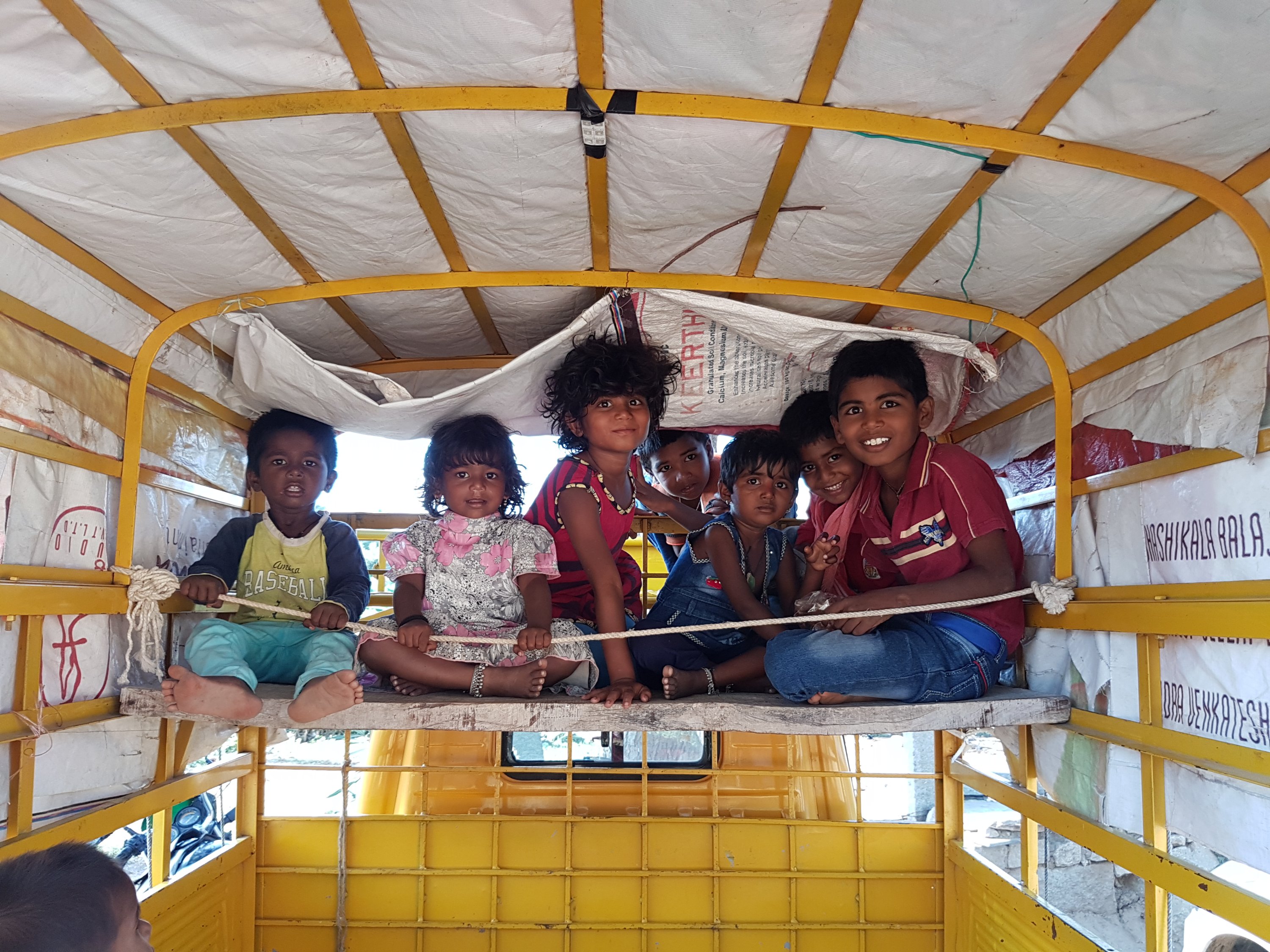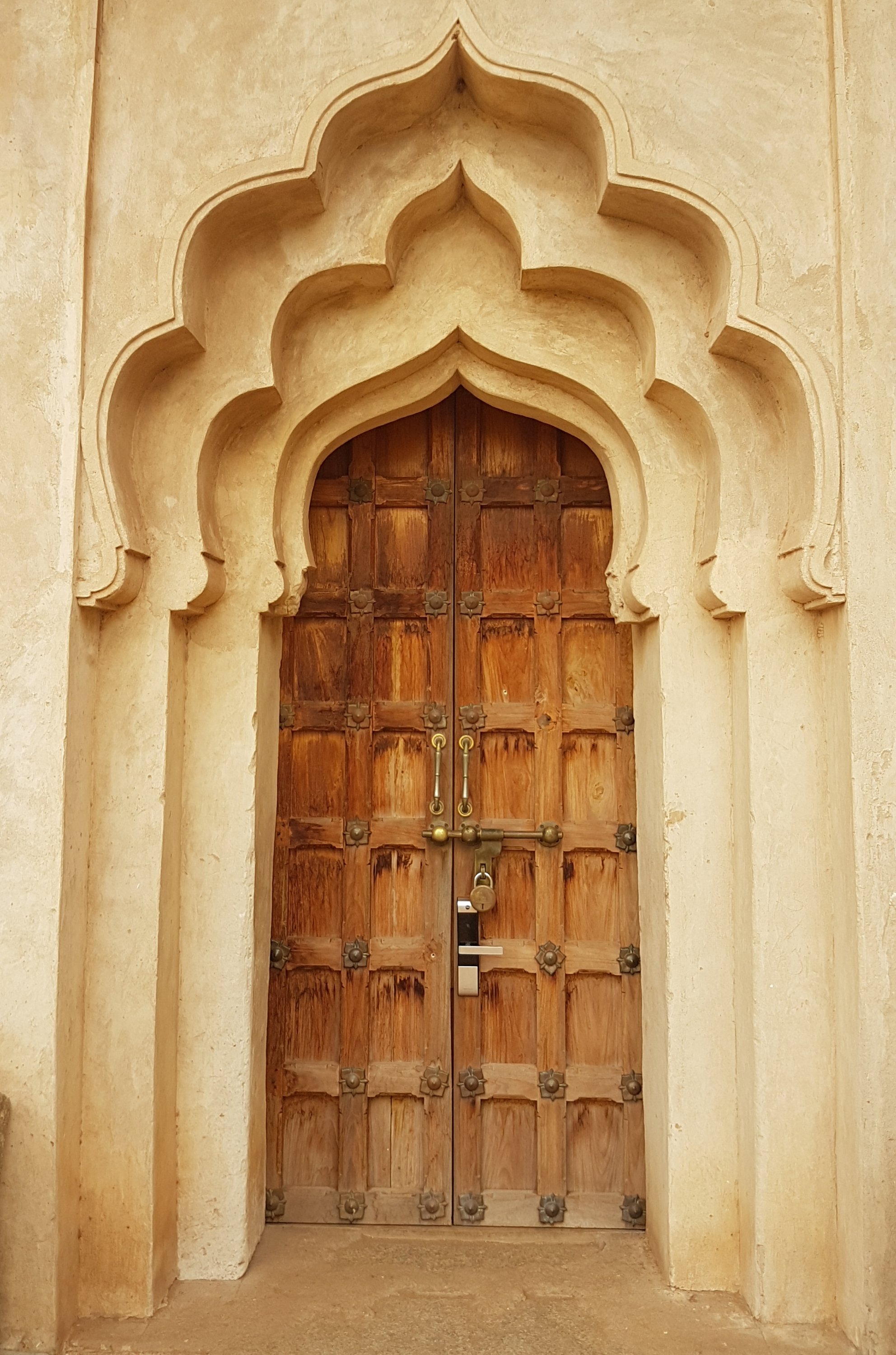
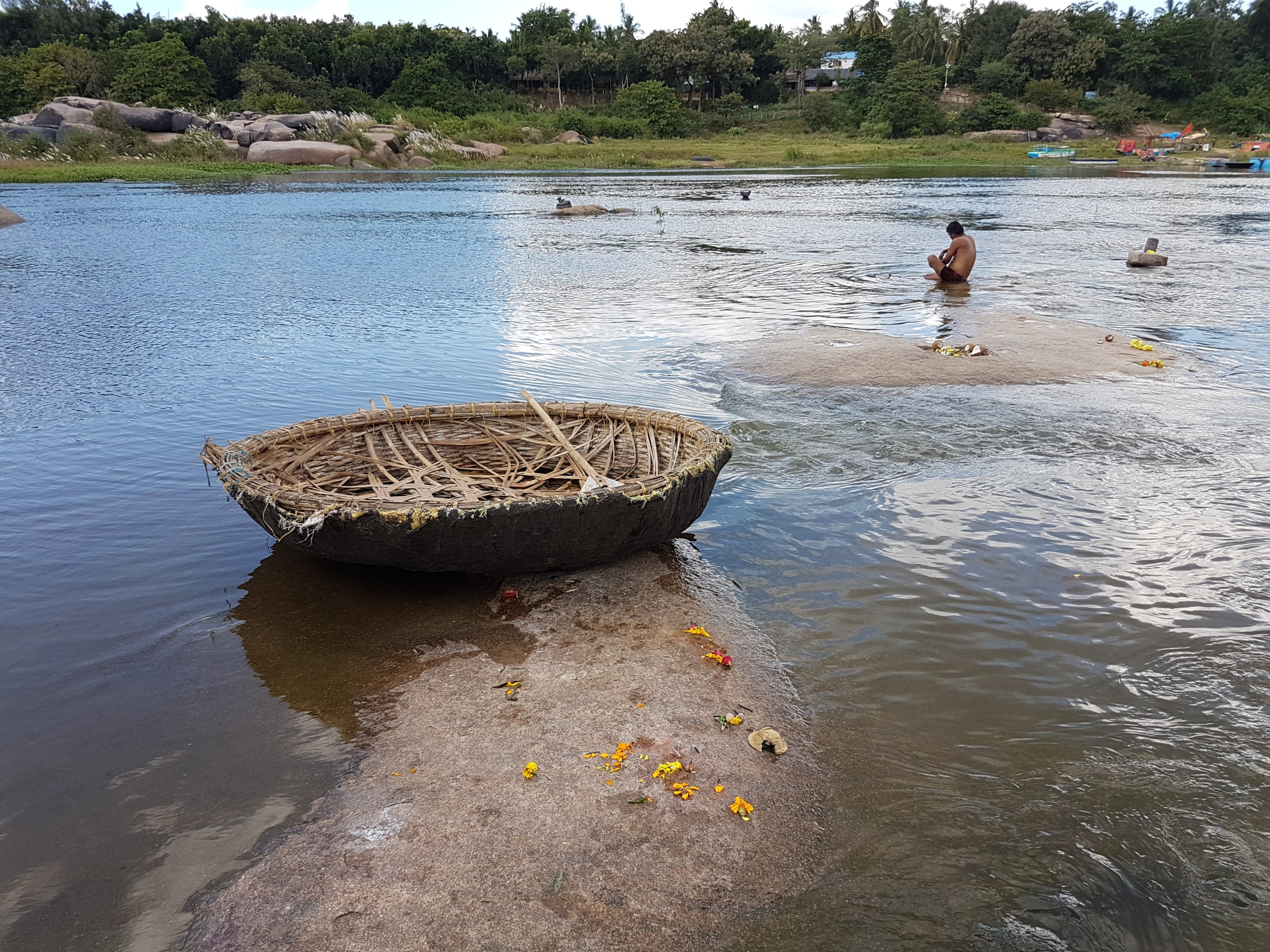
I was excited by the prospect of heading inland to visit the seat of the Vijayanagara kingdom from five hundred years ago and the older Chalukya dynasty of a millenia ago. Here I could see forts, ruins, temples, travel by train and perhaps move closer to an idea of India that I’d brought with me from home. The train journey was all good, accompanied as we were by Shivaraj, a middle ranking banking clerk, fresh from a training weekend in Goa (Ah, no, I don’t like that place), and looking forward to returning to the bosom of his family. ‘Family is most important thing, sir. Tradition is important, sir. The world can see this is what makes India strong. Marriage also.’ He had, three months before, become a father to a boy. His wife and son, as per tradition, reside with her parents for the first six months of baby’s life. We got to ask many questions of each other, and exchanged many answers; perhaps my face revealed as much incomprehension as his, as we digested our differences. I hope not.

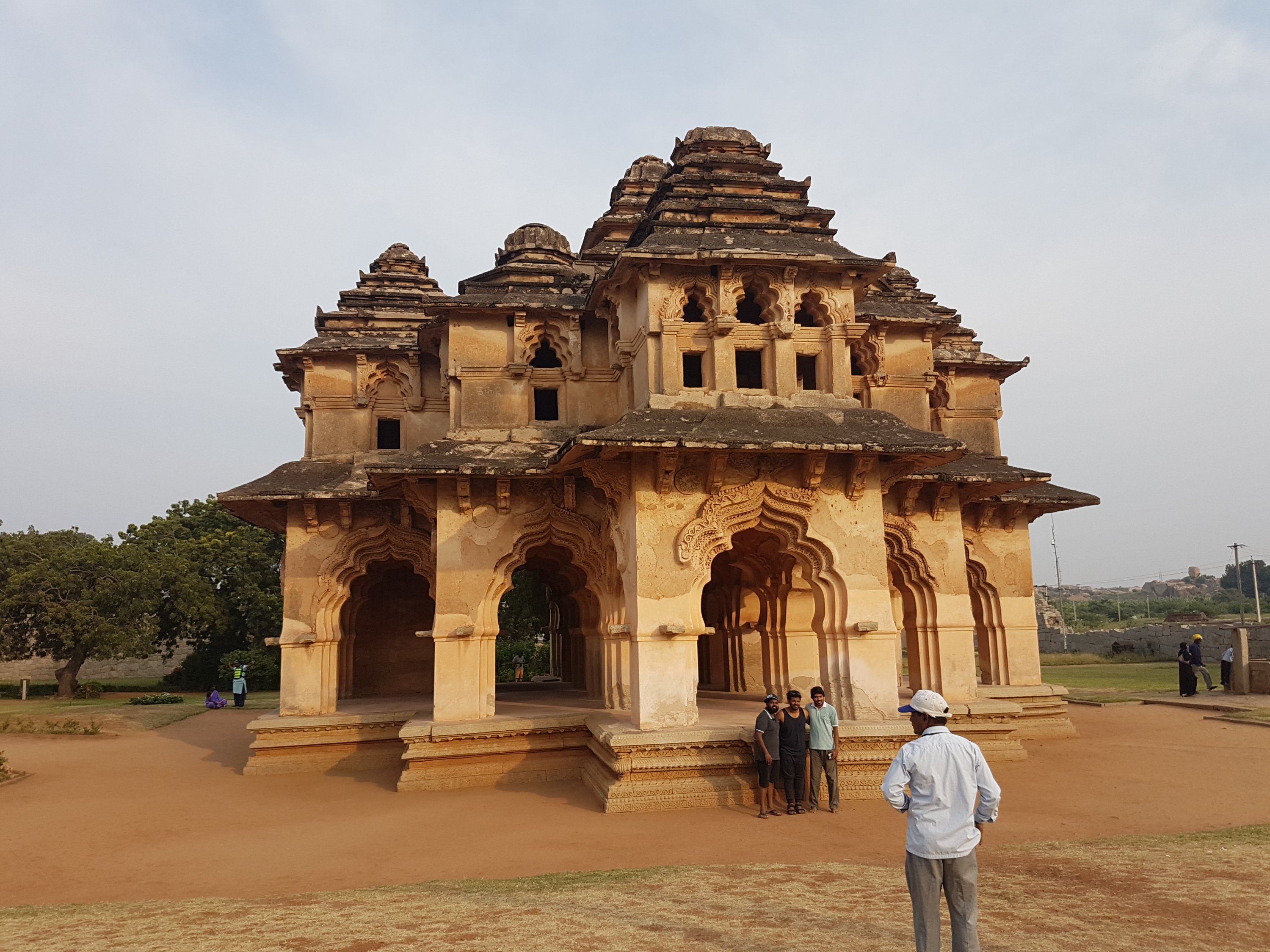

We were inundated with tuktuk offers at Hospete station. Hampi lay some fifteen kilometres away, a tuktuk to the bus station and a local bus ride should do it. Our driver tried to persuade us to let him take us further. We didn’t understand why we should. The bus station was bedlam. A couple of buses left packed to the rafters. Where was the bus for Hampi? Asking produced waved hands, more empty buses pulled in, instantaneously becoming completely full. These were the Hampi buses, there was a festival happening, the buses were free. There was no prospect of us three getting on one of those buses. We now understood the tuktuk driver’s offer – he’d take us as close to Hampi as possible, and then there would be other buses to take us the last six kilometers. When we disembarked at the temporary bus stand in a dusty field in the middle of nowhere, the scene that greeted us was more bedlam. We stood around for twenty minutes, watching packed buses drive past. A few empty buses arrived and were immediately surrounded by jostling crowds. The prospect of making our way on board intact was nil. We decided to walk. Forty minutes later, as I said falsely ‘Only ten more minutes’ for the umpteenth time, we paused exhausted. We had been passed by numerous full buses, numerous VIP cars (only they could proceed this far), and just as I voiced my ‘they never stop to offer you a lift ‘ thought, we were offered a lift. I remembered hitch hiking in France forty years ago, and the desperate fear that the driver would change his mind if I didn’t manage my body and bags into the car as speedily and neatly as possible, whilst at the same time striking the right balance between obsequious gratitude and charming insouciance.
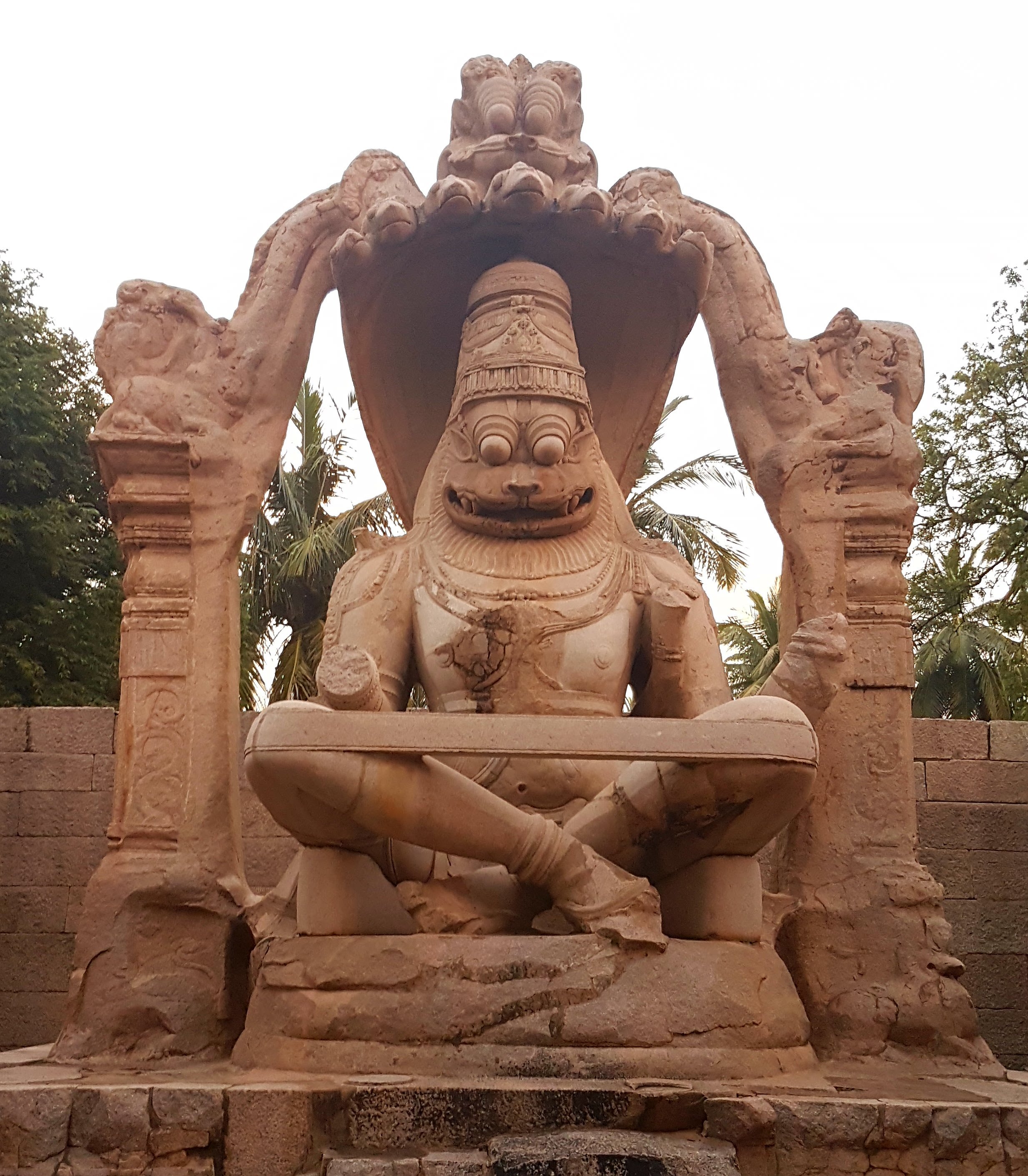




Five minutes later we hit the crowds. The driver pointed at his VIP badge a few times and barriers were opened, but progress amongst the throngs was slower than walking. But it was air-conditioned, and didn’t involve bag carrying. Eventually we could drive no further, and according to the map our rooms were a five minute walk away. Wilkie developed an impressive assertive striding, bear-no quarter approach after twenty yards of pushing and shoving our way forwards, Tash followed in our wake. Then, an alley appeared, down the end our rooms, a spacious first floor with balcony overlooking the main temple and a bundle of ruins. Only now did I grasp this was a music festival, an annual takeover of much of Hampi, a massive promotional hype fest featuring the latest rising stars on the scene.

No one had told us. But nor had we asked. For the record the Hampi Utsav, attracts a hundred thousand visitors over the course of three days, and includes attractions such as horse galloping, male and female wrestling, kabadi, light and sound shows, and eight stages spread across twenty hectares of ancient monuments. Our research won us a booby prize.

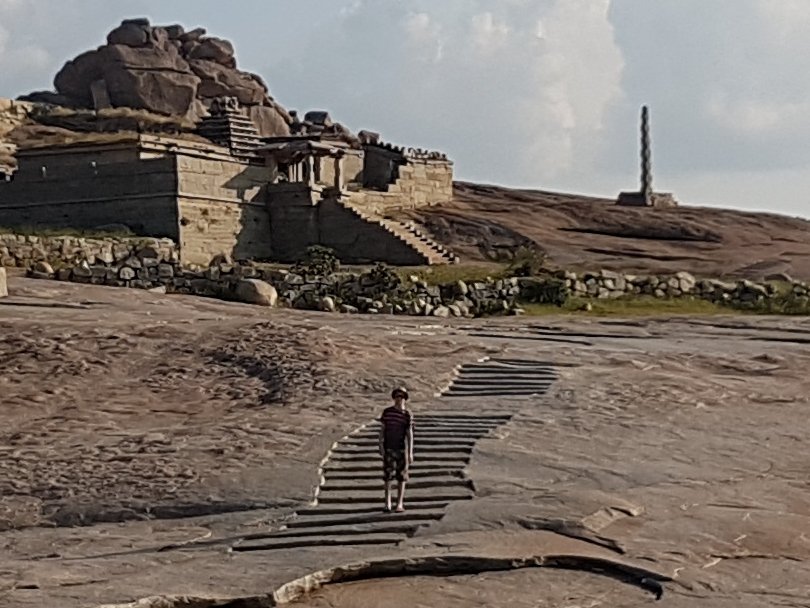

Our first outing took in the main temple, replete with an elephant, resident monkeys, families eating, washing, living on site for the duration of their visit. The entrance was through a portal in a thirty metre tall, tiered, gold painted pyramidal structure. The inner courtyards were walled to a height of ten meters, and various columned shrines lined the walls. Outside a huge tank some hundred meters by fifty with steps leading down on all sides held an undisclosed depth of green water.

Walking away along an avenue with mantapas, stone arcades, on either side, some completely collapsed, some intact, even two story, we headed half a kilometer to a now defunct temple. There was everywhere dismantling of the festival taking place. There was litter everywhere, little wrappings from ice creams, paan, sweeties, plastic bottles. We headed away, following a stone path that took us through a high cave and out the other side we came to more mantapas and temples and a stunning view of the river. Bells were ringing at one of the temples as a group of school children paid their dues, learnt some history, and made their excited, chattering, giggling way on. Hi, hi, how are you, fine, fine. We carried on past an excellent tea stall, rounded a corner, and came to a half dozen more temples, a boulevard of mantapas about six hundred metres long, with a dried up tank running the entire length, its beautiful entry spout still visible amongst the grasses and shrubs.
I struggled to understand the scale of the place, eventually thinking that if I made a model of Stone Henge using one brick for each lintel, and put it on the floor of our living room, the ruins of Hampi would occupy most of the rest of our flat. Every corner turned revealed more. Some was beautiful, carvings of scenes from the Ramayana on each pillar, carvings of gods and their many avatars at the entrance ways, some was mundane – cartoon elephants straight out of Jungle Book ringing the basement pedestal.

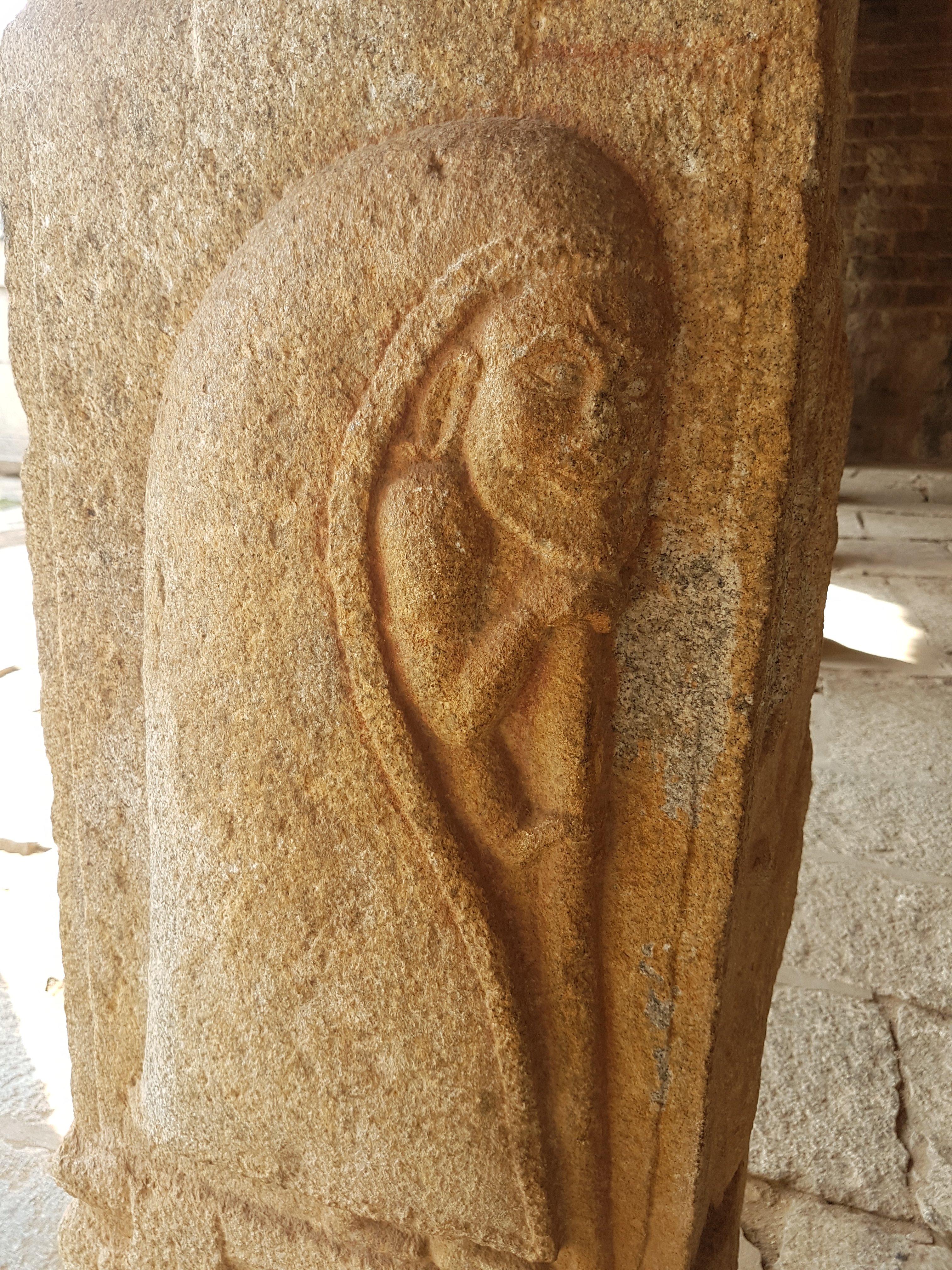
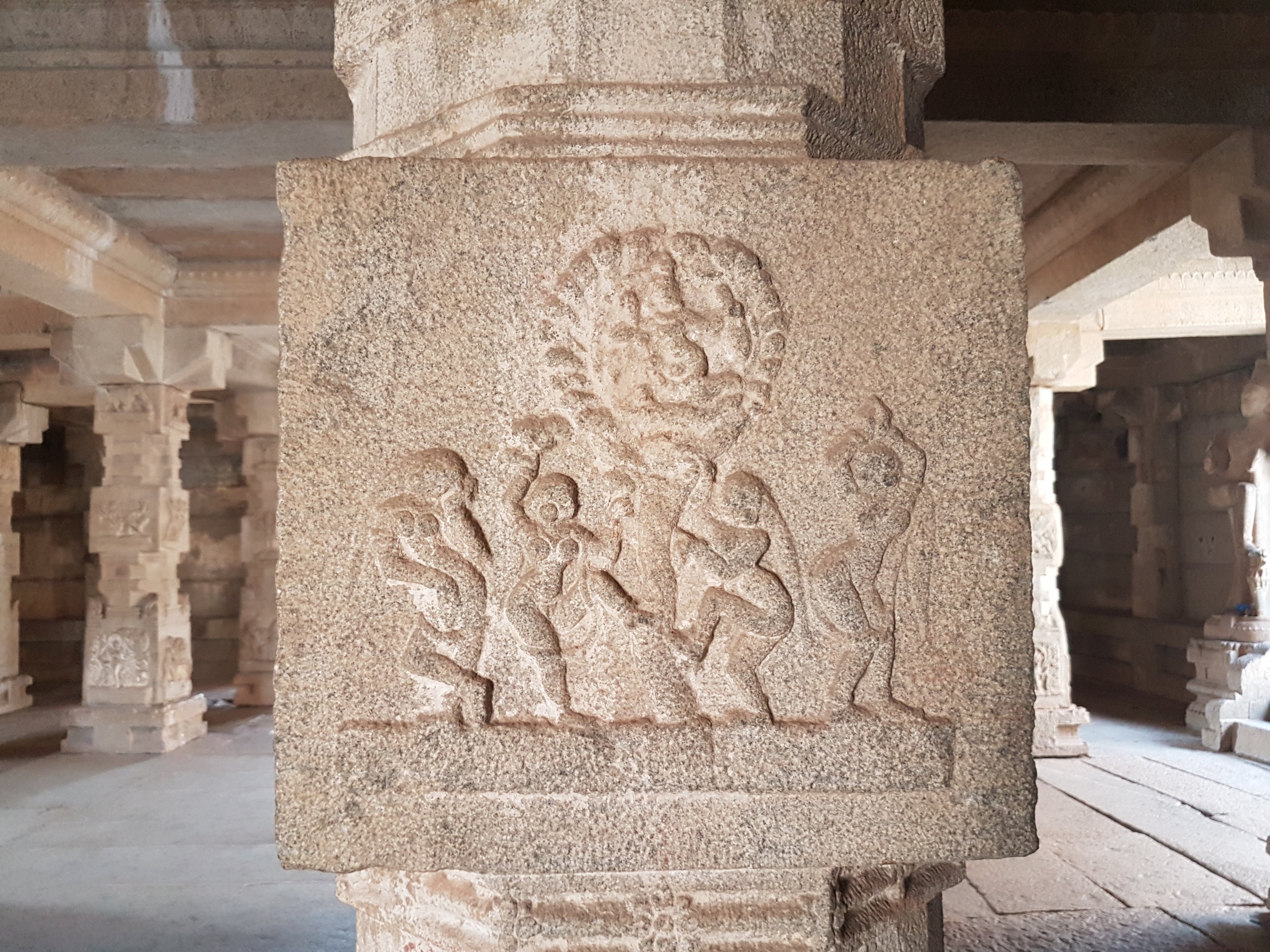

The geography of the site matches several of the legends in Hindu mythology, and temples grew up from the beginning of the common era. It was considered an important pilgrimage destination, however, the bulk of the site was built over a period of two hundred and fifty years, as the kingdom expanded and dominated neighbouring rulers. It was considered to be the second largest city in the world by the early sixteenth century with a population of five hundred thousand; the wall enclosing the city, large parts of which still exist, having a circumference of sixty miles. One battle too many, a king beheaded in combat, and conquering armies from the north looted the city. It burnt for six months, and has had only sparse village populations ever since. So what remains is stone, and landscape. Ever the socialist, when I read that some particular ruler built such and such a temple for his queen, I think ‘No he didnt. Hundreds and thousands of labourers and artisans did.’ There seem too many pieces of granite to compute the millions of days of labour required to build all this. Then I think about all the wooden buildings that burnt for six months. I am too small, and cannot think big enough.
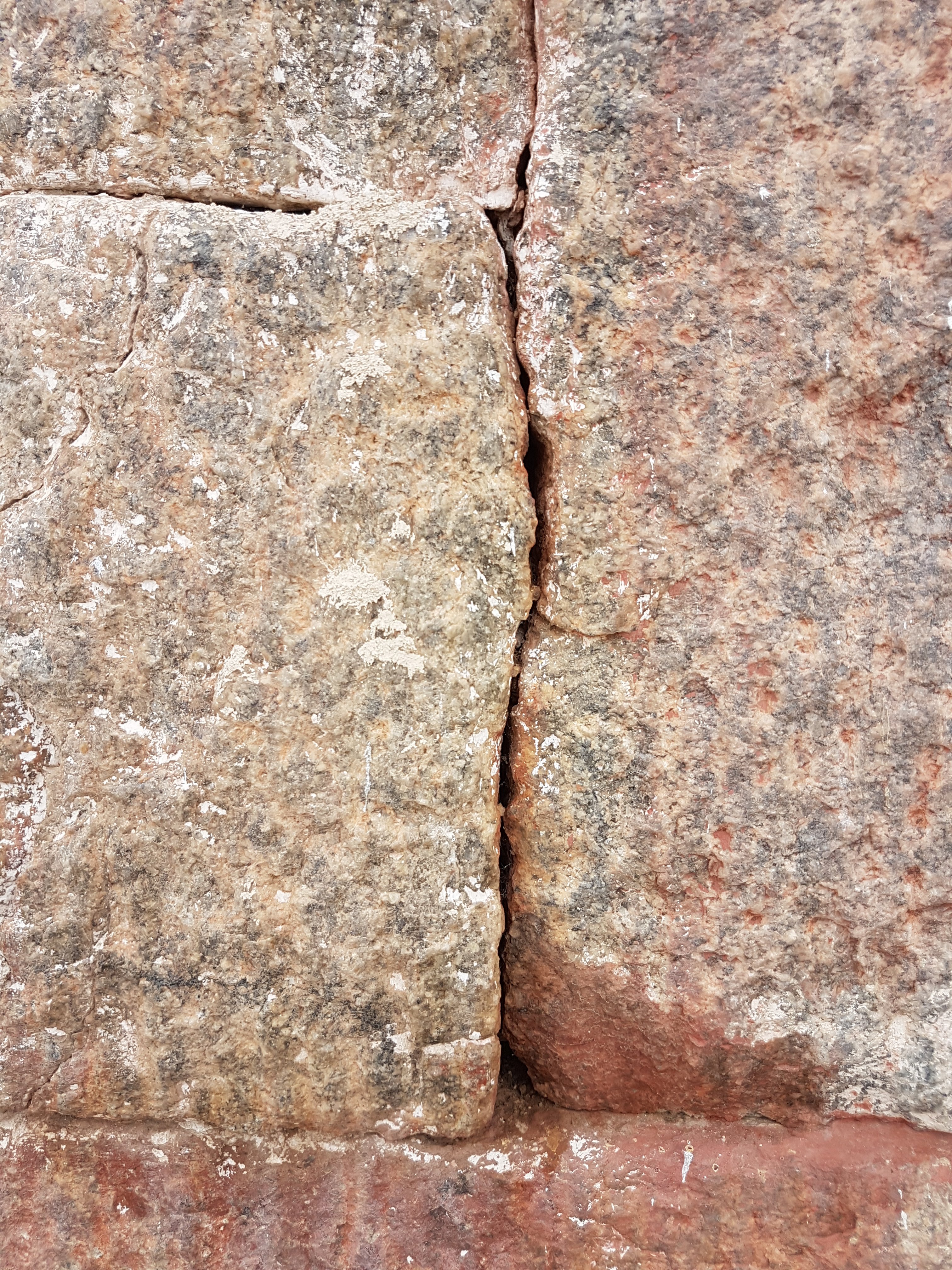

 We took a break from the ruins and explored the local waterfalls, abandoning our bikes as the track expired, and irritably refusing the help of a local guide. Look my map says the river is just there. Even when we had to turn back and pass him to try another route we persisted that we knew best. About an hour later, having spent most of our exploring, according to our map, in the middle of the river, we saw a couple being guided across the strange landscape. A young German couple, they were clearly grateful for their guide, and even had a touch of concern that we ancients might be hopping from rock to rock in an unknown landscape. This part of the river was a few miles downstream from a dam built in 1950, and the subsequent drop in the level of water revealed the incredible erosion of the boulder strewn bed. Looking at corkscrew shaped recessions leading deep between huge rocks, I understood what a whirlpool might actually mean, the massive force of current driving water down and between these giant slabs; no prisoners taken.
We took a break from the ruins and explored the local waterfalls, abandoning our bikes as the track expired, and irritably refusing the help of a local guide. Look my map says the river is just there. Even when we had to turn back and pass him to try another route we persisted that we knew best. About an hour later, having spent most of our exploring, according to our map, in the middle of the river, we saw a couple being guided across the strange landscape. A young German couple, they were clearly grateful for their guide, and even had a touch of concern that we ancients might be hopping from rock to rock in an unknown landscape. This part of the river was a few miles downstream from a dam built in 1950, and the subsequent drop in the level of water revealed the incredible erosion of the boulder strewn bed. Looking at corkscrew shaped recessions leading deep between huge rocks, I understood what a whirlpool might actually mean, the massive force of current driving water down and between these giant slabs; no prisoners taken.
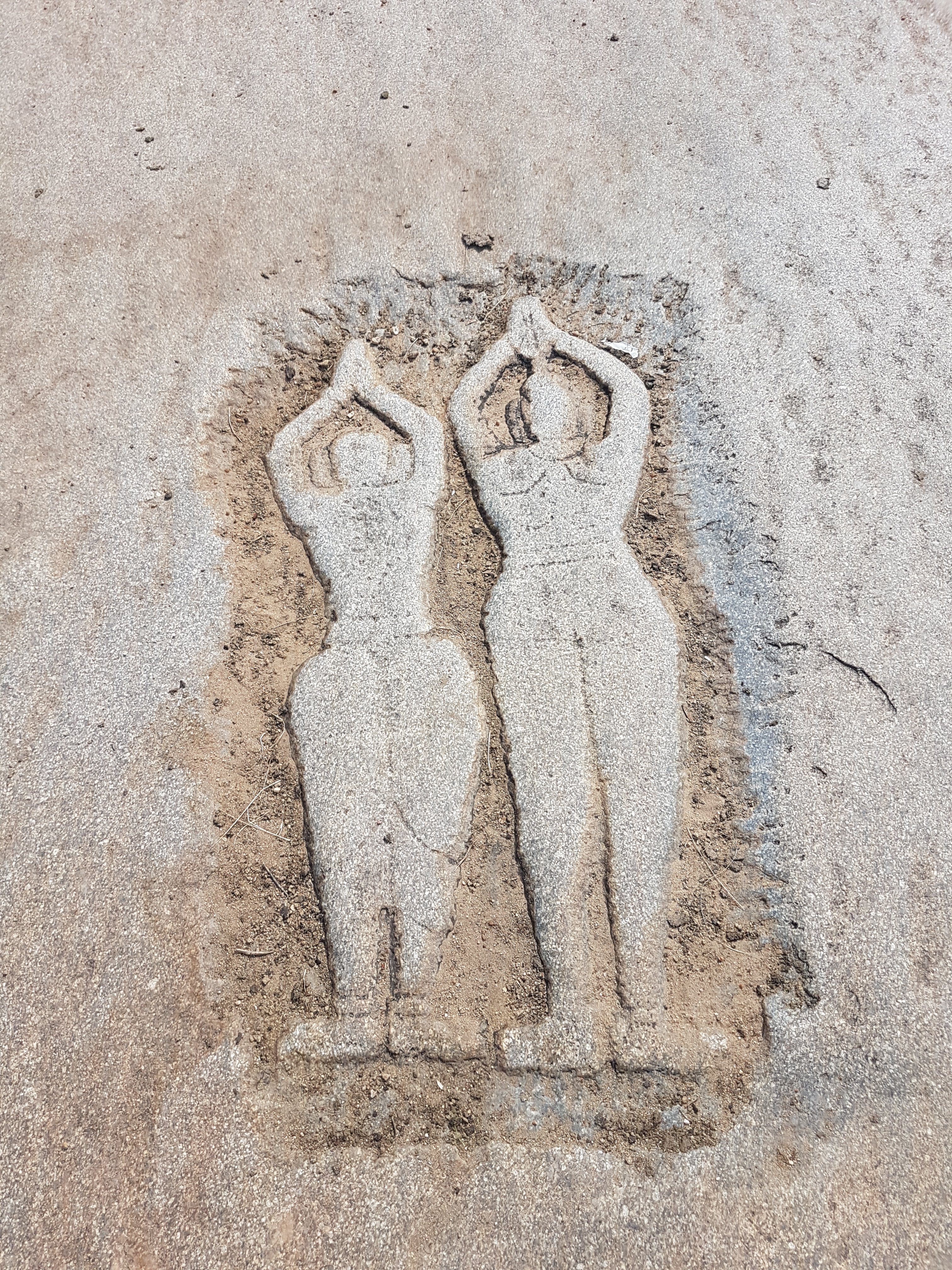
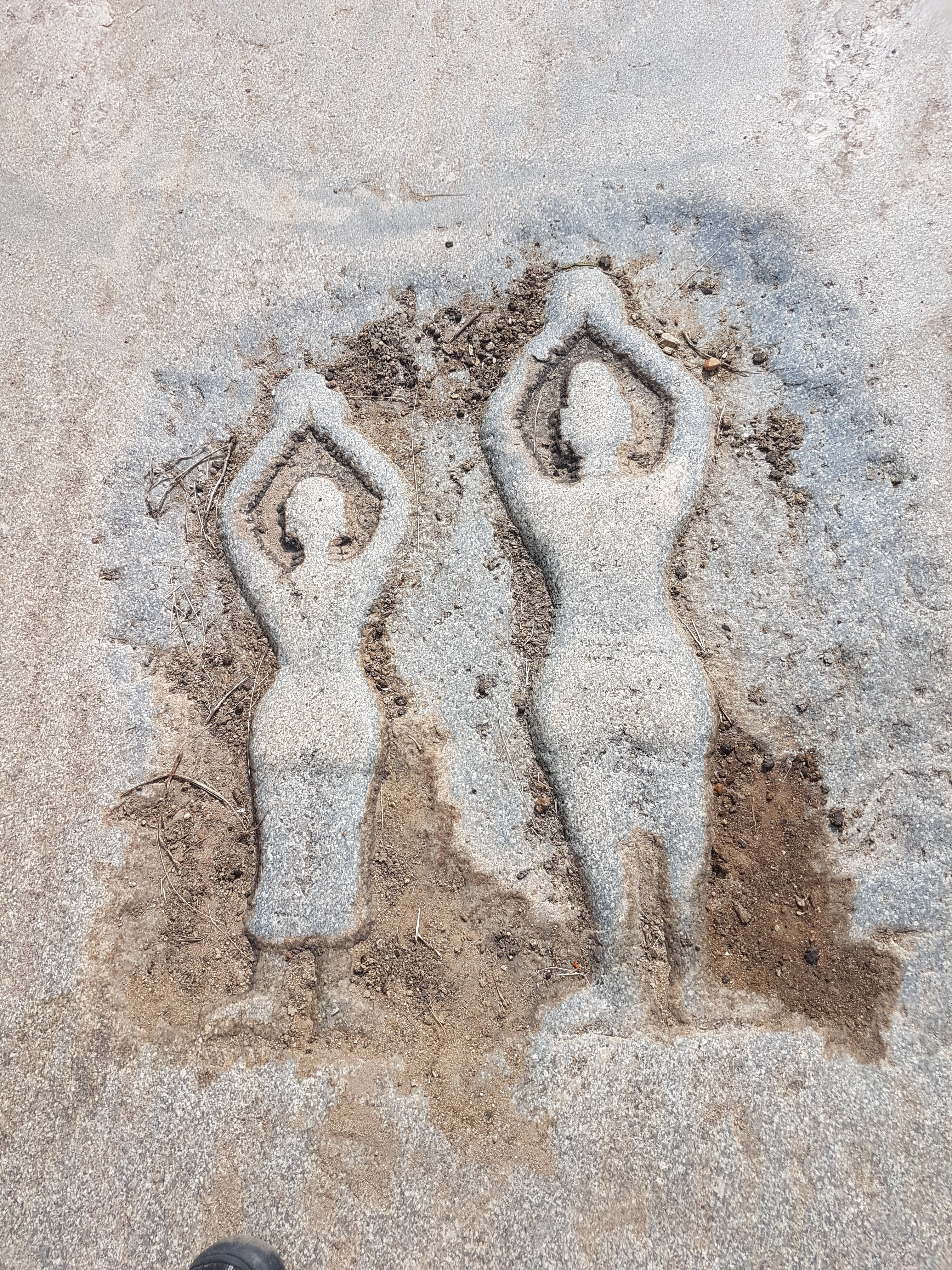
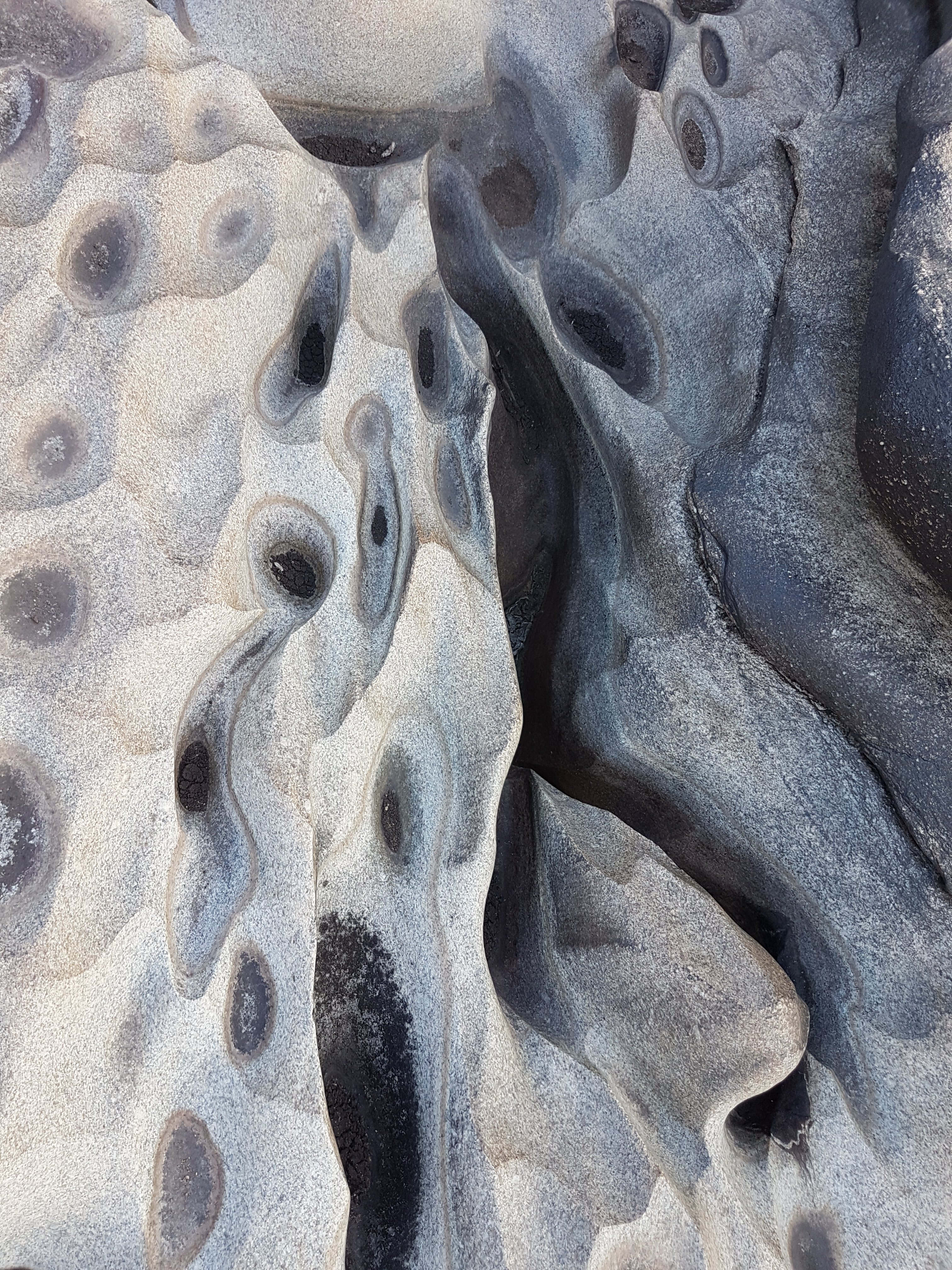

After nearly a week of ruin watching, tending for a couple of days to a poorly boy, being amused by the exploits of the local monkeys, experiencing random power cuts every day, staring at the same menu, fending off the same offers, no thank you I don’t need an auto to take me ten yards, realising, as another helicopter tour clatters overhead, that this place is massive, that most people come for a weekend, because you’ll never take it all in, it was time for a change.




